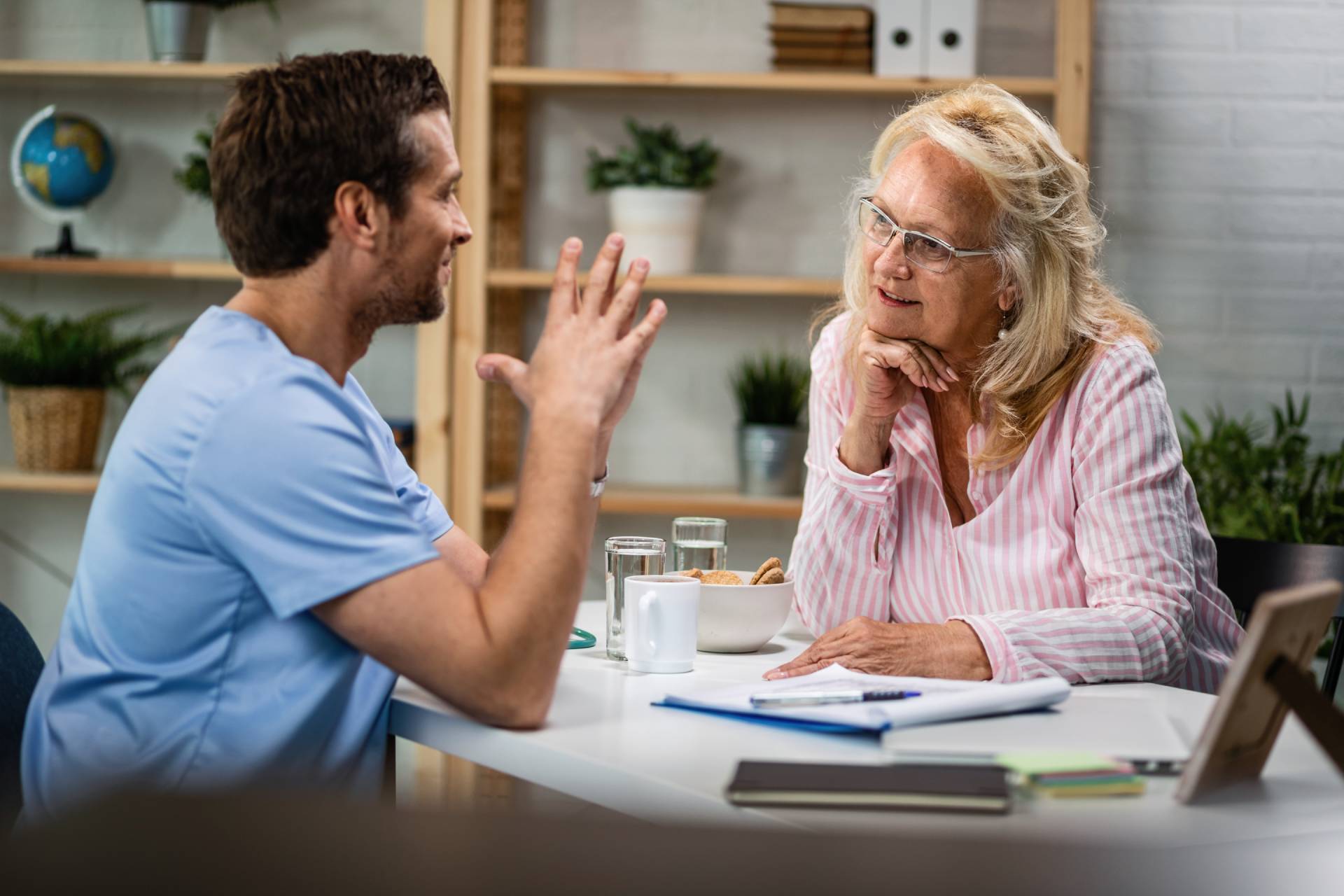Flexible Sigmoidoscopy in Utah
What exactly is a flexible sigmoidoscopy?
A flexible sigmoidoscopy is an endoscopic procedure that allows your GI doctor to get a detailed look at your colon health with the help of a lengthy, slender, pliable scope inserted through the rectum. Because of this, the technique is somewhat limited in that the entirety of the colon will not be viewed. The pipe has a camera and a light on the end of it, allowing the gastroenterologist to examine the lining of the colon. A sigmoidoscopy might be used to:
- Loose or watery stools
- Concerning x-ray results
- Get to the root of the cause of GI symptoms including:
- Pain in the abdomen
- Bleeding from the rectum
- As a screening tool for colon cancer and polyps.
Our experienced providers perform flexible sigmoidoscopies for Utah individuals. In the event that you are experiencing any worrisome symptoms in relation to your digestive tract such as those listed above, call Utah Gastroenterology to learn if a flexible sigmoidoscopy could be a helpful test for you.

What should I expect the day before my flexible sigmoidoscopy?
At some point before your procedure, your doctor will provide you with instructions regarding the necessary steps to prepare your bowel for your procedure. Most people will be instructed to consume only clear liquids for the entire day preceding the exam. There are numerous individual options for laxatives to flush the colon. It is important to follow the instructions provided to you by your Utah Gastroenterology specialist. In addition, there will be instructions relating to any medicine you are currently taking. Typically, any medications will be taken as usual. However, occasionally, especially in individuals on blood thinners (i.e., Plavix®, Coumadin®, warfarin, aspirin, or anti-inflammatories) and in those with diabetes, special directions will be provided. You will be directed to take nothing orally any later than midnight with an exception for some medications.
What happens on the day of my flexible sigmoidoscopy?
Your Utah Gastroenterology providers will instruct you to be present at our local endoscopy center 1 – 1.5 hours ahead of your flexible sigmoidoscopy exam. This will allow you adequate time to complete paperwork and get ready for the exam. You’ll be told to put on a hospital gown. The majority of the time, an intravenous (IV) catheter will not be started, as sedation is not administered with this exam. You could be hooked up to equipment that will permit the provider and staff to monitor your oxygen levels, heart rate, electrocardiogram, pulse, breathing, and blood pressure throughout and following the exam.
Once in the exam room, you’ll be asked to lie down on your left on the bed. The doctor will carry out an exam of your rectum. The sigmoidoscope will then be slowly inserted into the rectum. The scope will be carefully advanced throughout the sigmoid colon. A tiny bit of air is injected by way of the scope into the colon to help the physician see. Any fluid still in the colon post-preparation can be rinsed and suctioned out through the scope. Depending on the findings of the exam, a number of things can be performed during the exam including biopsies, removal of polyps, and control of bleeding. At the end of the procedure, as much of the air and remaining fluid as possible is suctioned out of the colon via the scope. Depending on the results, the exam usually takes 5 – 15 minutes to conduct.
Since sedation is not typically used, once the procedure is concluded, the patient will usually be instructed to change back into their clothes and prepare for discharge from the endoscopy center. Assuming sedation is not needed, you’ll be released to perform your normal activities as well as drive. Most people are able to drink and eat normally after their release from the endoscopy unit, however, unique directions in regard to activity, eating, and medications will be given to the patient in advance of discharge. After the exam, the nurse and/or doctor will review the results of the procedure with you. You will also be sent home with a typed report. The patient will be alerted of any results from biopsies in 7 days or less.
What are the risks of a flexible sigmoidoscopy?
Overall, sigmoidoscopy is a very safe test, triggering complications in fewer than 1% of patients. The majority of complications that may occur are minor, but there is a possibility of hospitalization and surgery in rare cases. Before we begin the exam, a member of our staff will issue you a consent form and review any risks. If you have any questions or concerns at this point, you may bring them up to your specialist to address before starting your procedure.
Bleeding could occur with biopsies and the removal of polyps. Again, a concerning amount of bleeding, which could require a blood transfusion or hospitalization, is highly uncommon. Still, bleeding can occur during the exam or as long as two weeks after the exam if a polyp is removed.
Perforation or puncture of the large intestine may take place. This can be noticed during the exam, or it may not be apparent until later in the day. In most cases, a perforation will necessitate surgery and hospitalization. This is an uncommon complication, even in the event that polyps are removed. It is very important that you contact your specialist’s office immediately if symptoms present following the procedure such as increasing abdominal pain, bleeding, or fever.
As with any other exam, a sigmoidoscopy is not perfect. There is a slight, recognized risk that abnormal tissues including polyps and cancers can be missed during the procedure. It is vital to remain vigilant and to follow up with your providers as advised and inform them of any new or ongoing symptoms. Please discuss with your Utah Gastroenterology specialist if you think of any questions or concerns.
Are there alternatives to a flexible sigmoidoscopy?
Depending on your condition and the reason for ordering the sigmoidoscopy to begin with, there may be other options. Certain x-ray tests can also be used to evaluate the colon, including a barium enema or a virtual CT scan. These methods are, however, only diagnostic exams. Treatment of any identified abnormalities will call for sigmoidoscopy, colonoscopy, or surgery. To learn more regarding flexible sigmoidoscopy in Utah or about your options for diagnosis and treatment of your condition, we suggest you contact our GI providers.
Flexible Sigmoidoscopy FAQs
How reliable is flexible sigmoidoscopy for identifying colon issues?
Flexible sigmoidoscopy is highly effective at diagnosing conditions in the lower part of the colon, such as polyps, cancers, and signs of inflammatory bowel disease. However, it is important to note that this procedure only examines the sigmoid colon and rectum, so it does not evaluate the entire colon. A colonoscopy may be necessary for a comprehensive assessment.
What is the recommended frequency for undergoing flexible sigmoidoscopy for colon cancer screening?
The interval for undergoing flexible sigmoidoscopy as part of colon cancer screening depends on several factors, including your age, family history of colon cancer, and overall health history. Typically, it is suggested that those at average risk have this screening every 5 to 10 years, beginning at age 45. Your gastroenterologist will adjust these guidelines based on your specific health situation.
What should I do if I have symptoms following a flexible sigmoidoscopy?
While mild symptoms like bloating or gas are common after a flexible sigmoidoscopy, you should be vigilant for more severe symptoms such as persistent pain, significant bleeding, or fever. If any of these occur, it’s crucial to seek immediate medical attention from your healthcare provider, as these symptoms could indicate complications like perforation or serious irritation.
